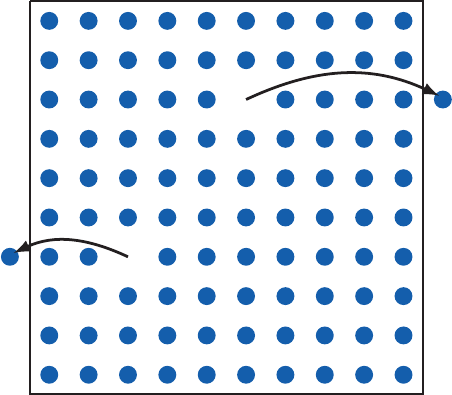« PreviousUpNext »Contents
Previous: A The Asymptotic Limit of the Phase Field Model Top: Home Next: Bibliography
B Vacancies in a Crystal Lattice
According to [16, 51] the appearance of vacancies in a lattice can be explained by thermodynamical arguments. Suppose atoms are taken away from lattice positions and migrated to the surface leaving back vacancies. This kind of
defects are called Schottky defects illustrated in Figure B.1. By assuming an atom positioned on a lattice site has the energy and an empty position has zero energy the
state energy of a lattice with
defects can be expressed by
Figure B.1.: Figure B.1.: Crystal lattice with atoms migrated to the surface leaving back Schottky defects [51].
As the vacancies are indistinguishable the number of distinct ways of distributing vacancies in a lattice with
lattice sites is given by
For a micro-canonical assembly, the entropy is defined by
Employing Stirling’s approximation for big
and omitting the terms of the order of results in
With (B.1) the entropy can be expressed as a function of the state energy and can further be related to the temperature by
resulting in
The final result can be rewritten giving
which makes only sense when the ratio is much less then one. Otherwise the solid would by perforated with holes and collapse. For a typical energy value of
is in the range of 39 and the ratio of vacancies to the total available sites is in the order of
at room temperature. For small temperature the vacancy to lattice sites ratio
function converges to
and has the form of an Arrhenius law used in the modeling of electromigration introduced in Chapter 3.
The specific heat for vacancy formation can be calculated by [48]
and vanishes at low temperature due to the excitation gaps. At high temperature the energy spectrum is bounded from above. For practically used materials not only the configuration entropy but also other entropies like the
vibration entropy are present.
Still the derivation shows that in a real crystal lattice vacancies are always present.
Previous: A The Asymptotic Limit of the Phase Field Model Top: Home Next: Bibliography
